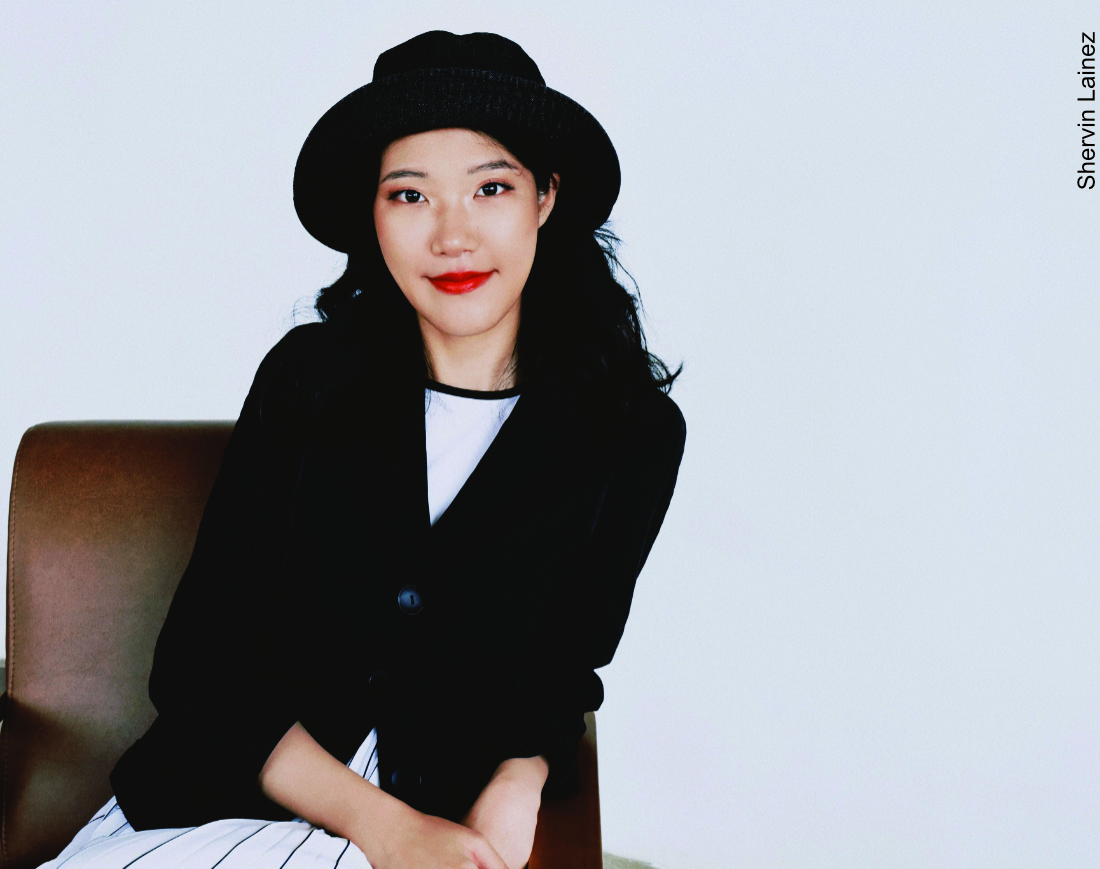Our concert featuring Ying Li has been designated as the Founders Concert for our 2023–2024 Season, in memory of our founders Gwen and Bill Stevens.
Renowned for her “graceful, lyrical” playing (Cleveland Classical), twenty-four-year-old Chinese pianist, Ying Li was the first prize winner of the 2021 Young Concert Artists Susan Wadsworth International Auditions.
Ms. Li has received top awards in numerous national and international competitions and performed with many leading orchestras such as The Philadelphia Orchestra, New Jersey Symphony, Brevard Music Festival Orchestra, L’Accademia Orchestra del La Scala, and the NWD-Philharmoniker.
This is her first appearance in our series.
This concert is sponsored by the
Stevens Family Fund of the
Community Foundations of the Hudson Valley
François Couperin (1668–1773)
Three Selections for Piano
Frédéric Chopin (1810–1849)
Variations Op.2 on “La ci darem la mano” from Don Giovanni
Richard Strauss (Grainger) (1864–1949)
Ramble on Love from Der Rosenkavalier;
I N T E R M I S S I O N
Maurice Ravel (1875–1937)
Le Tombeau de Couperin
Sergei Prokofiev (1891–1953)
Sonata No. 7 in B-Flat Major op. 83
I. Allegro inquieto
II. Andante caloroso
III. Precipitato
Program subject to change.
Program notes by Joseph Gusmano.
François Couperin (1668-1733)
Three Selections for Piano
The Couperin family was a successful dynasty in the music world. François’s grandfather was known as a “master instrumentalist” in his hometown, and his father was a celebrated organist in Paris. At the age of 25, he was appointed by King Louis XIV as the organist for the Chapelle du Roi at Versailles. In addition to the organ, Couperin was an accomplished harpsichordist and wrote a massive treatise for the instrument over the course of nearly 17 years. This treatise, along with his close association with the French monarchy, solidified Couperin’s legacy as a master of keyboard technique.
These three selections for piano come from Couperin’s harpsichord treatise. Each work is meant to strengthen different technical aspects of keyboard performance. While Couperin’s music tests the performer’s agility, endurance, and dexterity, they are also elegant enough to stand alone as concert pieces. His aim was to blend popular Italian musical styles, particularly the music of Arcangelo Corelli, with the techniques developed by Jean-Baptiste Lully, another famous French court composer.
Frédéric Chopin (1810-1849)
Variations, Op. 2 on “Là ci darem la mano”
Although Chopin lived a short life, he was a prolific composer whose works have become a staple in the solo piano repertoire. Today, Chopin’s music regularly appears in music lessons and concert halls all over the world. Through his compositions, Chopin expanded the role of the left hand at the keyboard far beyond the expectations of most composers and performers at the time. His subtle ear for harmony resulted in rich, highly emotive musical tapestries. In order to achieve this level of prowess in such a short amount of time, Chopin began his compositional efforts very early in his life.
At the age of 17, Chopin composed this homage, Variations on “Là ci darem la mano” to another prolific composer who died before his time: Wolfgang Amadeus Mozart. The variations come from a duet sung by Don Giovanni and Zerlina, two significant characters in Mozart’s opera Don Giovanni. Here, the lecherous aristocrat Don Giovanni tries to seduce Zerlina away from her husband. Chopin dedicated the manuscript score to his close friend Tytus Woyciechowski. Woyciechowski wrote a response on the same score, “I accept with pleasure.” When Robert Schumann first heard the work performed, he exclaimed, “Hats off, gentlemen, a genius!”
Richard Strauss (1864-1949)
arr. Percy Grainger (1882-1961)
Ramble on Love, from Der Rosenkavalier
Here we have a very different adaptation of a comic opera by a German composer. Besides Wagner and Mozart, there is perhaps no greater shadow cast by a German composer than that of Richard Strauss. His dense chromatic music received mixed reactions from his contemporaries: some welcomed this Romantic music saturated with dissonance, while others felt it was too free and cacophonous. Over time these initial reactions gave way to a deep reverence for a master orchestrator and composer. During the early 20th century Strauss met frequently with Percy Grainger, an Australian composer who is known for his piano and wind music. Strauss even conducted and premiered several works by Grainger.
In 1920 Grainger adapted Strauss’s comic opera, Der Rosenkavalier, or “The Rose Bearer,” for piano; it is easily one of Grainger’s most demanding keyboard works. Like many comic operas, the libretto follows the fanciful love triangles—or quadrilaterals in this case—that befall the members of the Austrian elite. Grainger’s mother’s name was Rose, and after her suicide in 1922 he worked feverishly to memorialize her in this work. The music requires technical virtuosity, a strong hand, and a delicate sensibility. In addition to the flurry of notes, the performer must contend with Grainger’s many performance instructions to accurately pull off this masterpiece.
Intermission
Maurice Ravel (1875-1937)
Le Tombeau de Couperin
- Prélude
- Fugue
- Forlane
- Rigaudon
- Menuet
- Toccata
Maurice Ravel is considered to be one of the greatest French composers of all time. During his life, Ravel listened to and internalized a wide array of musical styles from Romantic and Expressionist music to jazz in his later years. Works like Daphnis et Chloé and Boléro are timeless works performed by major orchestras around the world. Though not as prolific a composer as some of his contemporaries, Ravel is celebrated for creating works that are extremely complex, technically demanding, and transcendentally beautiful.
This set of keyboard works is inspired by the Baroque composer François Couperin. Each movement comes from either Baroque dance forms, like the Menuet, Forlance, and Rigaudon, or common Baroque instrumental forms like the Prelude, Fugue, and Toccata. Ravel reinvigorates these forms with new techniques and harmonic devices from the 19th and 20th centuries. Ravel, who served as a volunteer ambulance driver during the First World War, wrote Le Tombeau with several fallen friends in mind. Each movement commemorates a friend who lost their life during the Great War.
Sergei Prokofiev (1891-1953)
Sonata No. 7 in B-flat Major, Op. 83
- Allegro inquieto
- Andante caloroso
- Precipitato
Sergei Prokofiev composed his Sonata No. 7 during the Second World War; this is the second of his three aptly nicknamed “War Sonatas.” In 1939 his close friend, the theater director and actor Vsevolod Meyerhold was secretly arrested and shot on the orders of Joseph Stalin. Meyerhold’s wife was also brutally murdered by the government. Soon after these incidents, Prokofiev was invited to compose a cantata to celebrate Joseph Stalin. He begrudgingly accepted, and after its completion he proceeded to compose these three sonatas, which are among his most dissonant piano pieces.
The first movement of this sonata is full of nervous, hurried figurations. It mocks classical gestures, and it features violently articulated clusters of notes. The opening of the second movement contrasts with the first, a beautiful melody based on Robert Schumann’s Lied, “Wehmut” or “Sadness.” This gentle music gives way again to a dense chromatic section with bell-like attacks that settle once more into the languid, sorrowful theme from the start of the piece. The final movement is considered the most difficult of the three, though it is by far the least dissonant. The music takes the form of a toccata, or a show piece meant to demonstrate the technical prowess of the performer.
Ying Li, piano
Twenty-four-year-old Chinese pianist, Ying Li is the First Prize winner of the 2021 Young Concert Artists Susan Wadsworth International Auditions, as well as recipient of The Bridgehampton Chamber Music Festival Prize and the Tri-I Noon Recitals Prize. She has received top awards in numerous national and international competitions including the inaugural Antonio Mormone International Prize, Sarasota Artist Series Piano Competition, Brevard Music Festival, International Liszt Piano Competition for Young Pianists, and was a finalist at Concours musical international de Montréal.
Ying has performed with many leading orchestras such as The Philadelphia Orchestra, New Jersey Symphony, Brevard Music Festival Orchestra, L’Accademia Orchestra del La Scala, and the NWD-Philharmoniker, and with conductors such as Lina Gonzalez-Granados, Xian Zhang, Eric Jacobsen, and Jonathon Heyward. Ying will make her New York City recital debut at Carnegie Hall’s Zankel Hall and her Washington, DC debut at the Kennedy Center’s Terrace Theater with additional US recitals at Pepperdine University in Malibu, Evergreen Museum & Library in Baltimore, Sunday Musicale in New Jersey, Southeastern Piano Festival, and the Honest Brook Music Festival.
Upcoming and recent recitals also include Sala Verdi in Milan, Hammerklavier International Piano Festival in Barcelona, Musica Insieme Bologna, Teatro Alighieri in Ravenna, Fazioli Pianoforti in Sacile, and the C. Bechstein Series at the Konzerthaus in Berlin. Ying was also featured on WQXR’s Eine-kleine Birthday-musik, a free, all-Mozart live streamed concert from The Greene Space in New York City, to celebrate Mozart’s 266th birthday.
As an avid chamber musician, Ying has appeared at prestigious festivals around the world including the Verbier Festival Academy, ClassicheFORME International Chamber Music Festival in Lecce, Ravinia’s Steans Institute, La Jolla Music Society, Great Lakes Chamber Music Festival, Norfolk Chamber Music Festival, the Artists Series Concerts in Sarasota, and the Bridgehampton Chamber Music Festival.
Ying began piano lessons at age five in China and was a student at the Elementary School division of the Central Conservatory of Music in Beijing. Then she moved to Philadelphia in 2012 at age fourteen to study at the Curtis Institute of Music with Jonathan Biss and Seymour Lipkin. After receiving the Bachelor of Music degree at Curtis Institute in 2019, she received her Master of Music degree at The Juilliard School in New York with Robert McDonald, and continues her studies with McDonald at the Juilliard School’s Artist Diploma Program.




